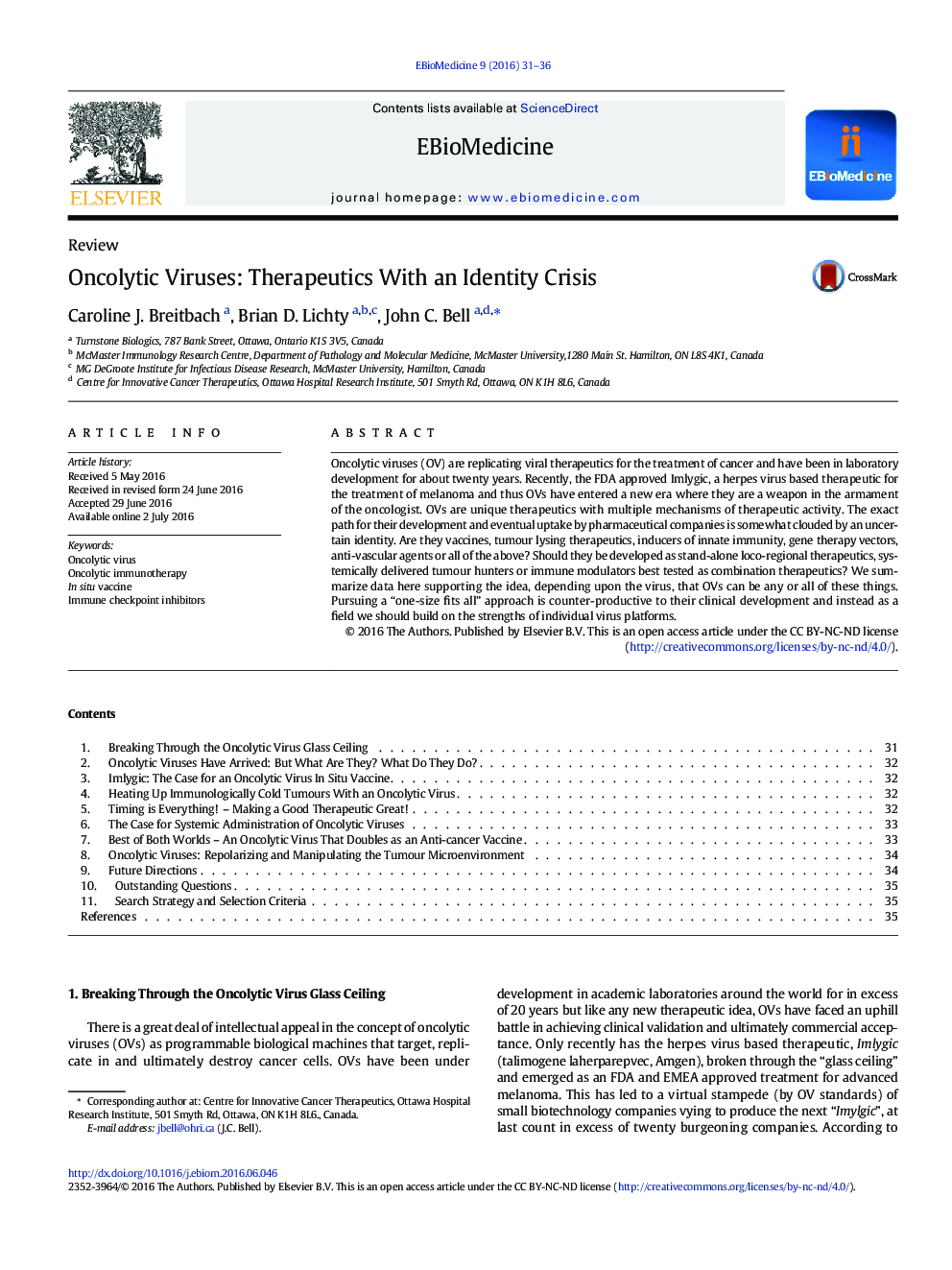| Article ID | Journal | Published Year | Pages | File Type |
|---|---|---|---|---|
| 2120702 | EBioMedicine | 2016 | 6 Pages |
•Oncolytic viruses (OVs) directly infect and lyse tumour cells.•A subset of OVs are amenable to systemic administration, thereby targeting metastatic disease.•OV infection releases endogenous antigens in a pro-inflammatory context, thereby functioning as an in situ tumour vaccine.•The ability of OVs to induce anti-tumour immunity can be improved by encoding tumour antigens in the OV backbone.
Oncolytic viruses (OV) are replicating viral therapeutics for the treatment of cancer and have been in laboratory development for about twenty years. Recently, the FDA approved Imlygic, a herpes virus based therapeutic for the treatment of melanoma and thus OVs have entered a new era where they are a weapon in the armament of the oncologist. OVs are unique therapeutics with multiple mechanisms of therapeutic activity. The exact path for their development and eventual uptake by pharmaceutical companies is somewhat clouded by an uncertain identity. Are they vaccines, tumour lysing therapeutics, inducers of innate immunity, gene therapy vectors, anti-vascular agents or all of the above? Should they be developed as stand-alone loco-regional therapeutics, systemically delivered tumour hunters or immune modulators best tested as combination therapeutics? We summarize data here supporting the idea, depending upon the virus, that OVs can be any or all of these things. Pursuing a “one-size fits all” approach is counter-productive to their clinical development and instead as a field we should build on the strengths of individual virus platforms.
